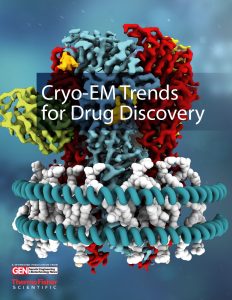 Cryo-electron microscopy (cryo-EM) has advanced rapidly in the past few years, positioning itself as an invaluable tool for the pharmaceutical industry. Nobel Laureate Richard Henderson predicted that by 2024, more protein structures will be determined by cryo-EM than X-ray crystallography.
Cryo-electron microscopy (cryo-EM) has advanced rapidly in the past few years, positioning itself as an invaluable tool for the pharmaceutical industry. Nobel Laureate Richard Henderson predicted that by 2024, more protein structures will be determined by cryo-EM than X-ray crystallography.
Numerous advancements have made cryo-EM better suited for pharmaceutical research. The timeliness and throughput of the workflow has increased dramatically, allowing membrane protein targets to be supported by structural biology, similar to how kinases are supported by crystallography. The publication of GPCR, ion channel, and Covid-19 spike protein structures by multiple competing groups demonstrates the technique’s increased ease of use. Cryo-EM is no longer an exhausting Nobel-prize-worthy effort—numerous groups have now integrated this technique into their work.
The Resolution Revolution, and the subsequent Throughput Revolution, made cryo-EM fit into the drug discovery process as smoothly as X-ray crystallography. Will we go beyond that in the next few years? Unhindered by crystal contacts, a cryo-EM sample contains multiple conformations that sample the flexibility of proteins. It’s exciting to look forward to drugs that lock one such conformational state intentionally with an allosteric compound or antibody.
For example, deconvoluting the signature assembly of neurodegenerative Tau filaments may inspire and validate desperately needed models for geriatric diseases, finally giving that field the push it needs.
In the past the use of structure biology has been used as a way to strengthen patents but recent publications, showing distinct modes of action for different antibody drugs against the same target, indicate that cryo-EM will likely be used for the antibody discovery and development process much earlier.
This e-Book shows just some of the things that can be done with cryo-EM. We hope you will see how much the technique has matured, and how the microscopes themselves have become more intelligent, enabling users to focus on the science, instead of on the machine.

